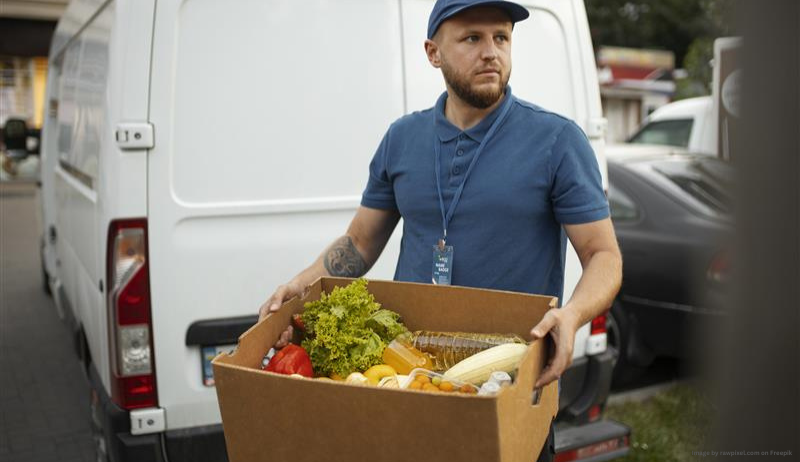As we head into 2025, U.S. foodservice distributors and wholesalers are navigating a landscape that is as dynamic as it is demanding. From supply chain bottlenecks to inflationary pressures, the stakes are high for businesses tasked with keeping America’s restaurants, schools, and hospitality venues stocked with everything from fresh produce to frozen goods. If you are in this industry, you have felt the squeeze, but the good news is, there are strategies to turn these challenges into opportunities.
We have been collaborating closely with foodservice professionals across the U.S. to identify the biggest hurdles they will face in the year ahead, and how to tackle them head-on. In this blog, we will break down the top challenges and share practical solutions to help your distribution business thrive.
1. Persistent Supply Chain Disruptions
The U.S. foodservice industry is still reeling from the aftershocks of the pandemic, compounded by new disruptions like port congestion at Los Angeles and Long Beach, extreme weather events, and the ongoing truck driver shortage. According to the American Trucking Associations, the U.S. faces a shortage of over 80,000 drivers, a gap that is driving up shipping costs and delaying deliveries.
How to Overcome It:
Diversify Your Supplier Base: Relying on a single supplier (or region) is a gamble. Source from multiple vendors, consider regional players or even nearshoring options in Mexico to reduce dependence on overseas imports.
Invest in Visibility Tools: Platforms like FourKites or Project44 offer real-time tracking, helping you predict delays and adjust inventory plans.
Partner with Local Carriers: Smaller, regional trucking firms can often fill gaps left by national carriers, especially for last-mile delivery.
By building a more resilient supply chain, you can keep goods flowing even when the unexpected strikes.
2. Rising Costs and Price Volatility
Inflation hit a 40-year high in the U.S. in recent years, and foodservice distributors are caught in the crossfire. Commodity prices, like beef (up 20% since 2022) and fuel, are unpredictable, while customers (think restauranteurs) resist price hikes. Balancing profitability with client retention is tougher than ever.
How to Overcome It:
Lock in Long-Term Contracts: Negotiate fixed-price agreements with key suppliers to shield against sudden spikes.
Offer Value-Added Services: Instead of competing on price alone, bundle services like menu planning support or waste reduction consulting to justify modest increases.
Communicate Transparently: Be upfront with clients about cost drivers (e.g., fuel surcharges) and how you are working to minimize pass-through expenses.
Staying proactive about costs can protect your margins without alienating your customer base.
3. Labor Shortages and Retention Struggles
The “Great Resignation” has not spared the foodservice distribution sector. Warehouse workers, drivers, and sales reps are in short supply, with turnover rates in logistics hovering around 20% annually. Rising wages help, but they are eating into thin margins.
How to Overcome It:
Upskill: Offer training programs, like forklift certification or inventory software tutorials, to make jobs more engaging and boost retention.
Embrace Automation: Robotic picking systems or automated guided vehicles (AGVs) can reduce reliance on manual labor. While upfront costs are steep, the ROI in labor savings is compelling over time.
Sweeten the Deal: Beyond wages, rewards like flexible schedules or performance bonuses can set you apart in a competitive hiring market.
A stable, efficient team is your backbone, invest in it accordingly.
4. Evolving Customer Expectations
Restaurants and foodservice operators are demanding more from distributors: faster delivery (same-day is now table stakes in urban markets like New York and Chicago), wider product selections (hello, plant-based boom), and digital ordering capabilities. Falling short risks losing business to competitors or direct-to-consumer giants.
How to Overcome It:
Upgrade Your Tech Stack: If your ordering system is not mobile-friendly or integrated with customer CRM, it is time for an overhaul. Tools like NetSuite or FoodConnex can streamline operations and improve the client experience.
Expand Specialty Offerings: Tap into growing trends, like organic, gluten-free, or locally sourced products, to meet niche demands.
Optimize Delivery Routes: Use route planning software to cut transit times and offer tighter delivery windows, especially in sprawling markets like the Southeast.
Meeting clients where they are, digitally and operationally, can solidify your edge.
5. Regulatory and Sustainability Pressures
While the U.S. lags Europe in mandatory sustainability rules, pressure is mounting from customers and local governments. Cities like Seattle and San Francisco are banning single-use plastics, and large chains like McDonald’s are pushing suppliers for greener practices. Distributors ignoring this trend risk falling behind.
How to Overcome It:
Switch to Eco-Friendly Packaging: Transition to compostable or reusable options where feasible. Yes, it is a pricier upfront, but it is a selling point for eco-conscious clients.
Track Your Carbon Footprint: Tools like CarbonChain can quantify emissions from your fleet or warehouses, helping you set reduction goals and market your progress.
Educate Your Team: Train staff in sustainability best practices, like reducing food waste during transport, to align operations with these goals.
Going green isn’t just compliance, it’s a competitive differentiator.
Looking Ahead: Turning Challenges into Wins
The U.S. foodservice distribution market is projected to hit $340 billion by 2025, fueled by a rebounding restaurant sector and growing demand for convenience. But capitalizing on this growth means adapting to the realities of today’s environment. Whether it’s tightening your supply chain, embracing technology, or greening your operations, the distributors who succeed will be those who act decisively.
At SMD Net, we specialize in helping foodservice wholesalers navigate these complexities. Need tailored advice for your business? Reach out for a consultation, we’d love to help you turn these challenges into your next big opportunity.
Get our report on the US Foodservice industry. Download here!


